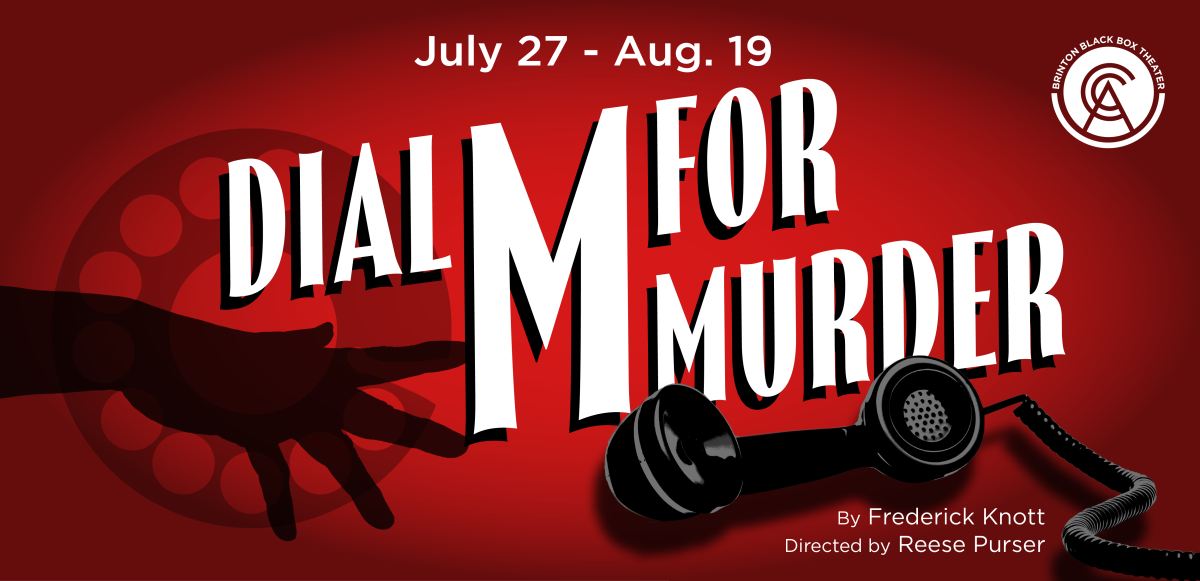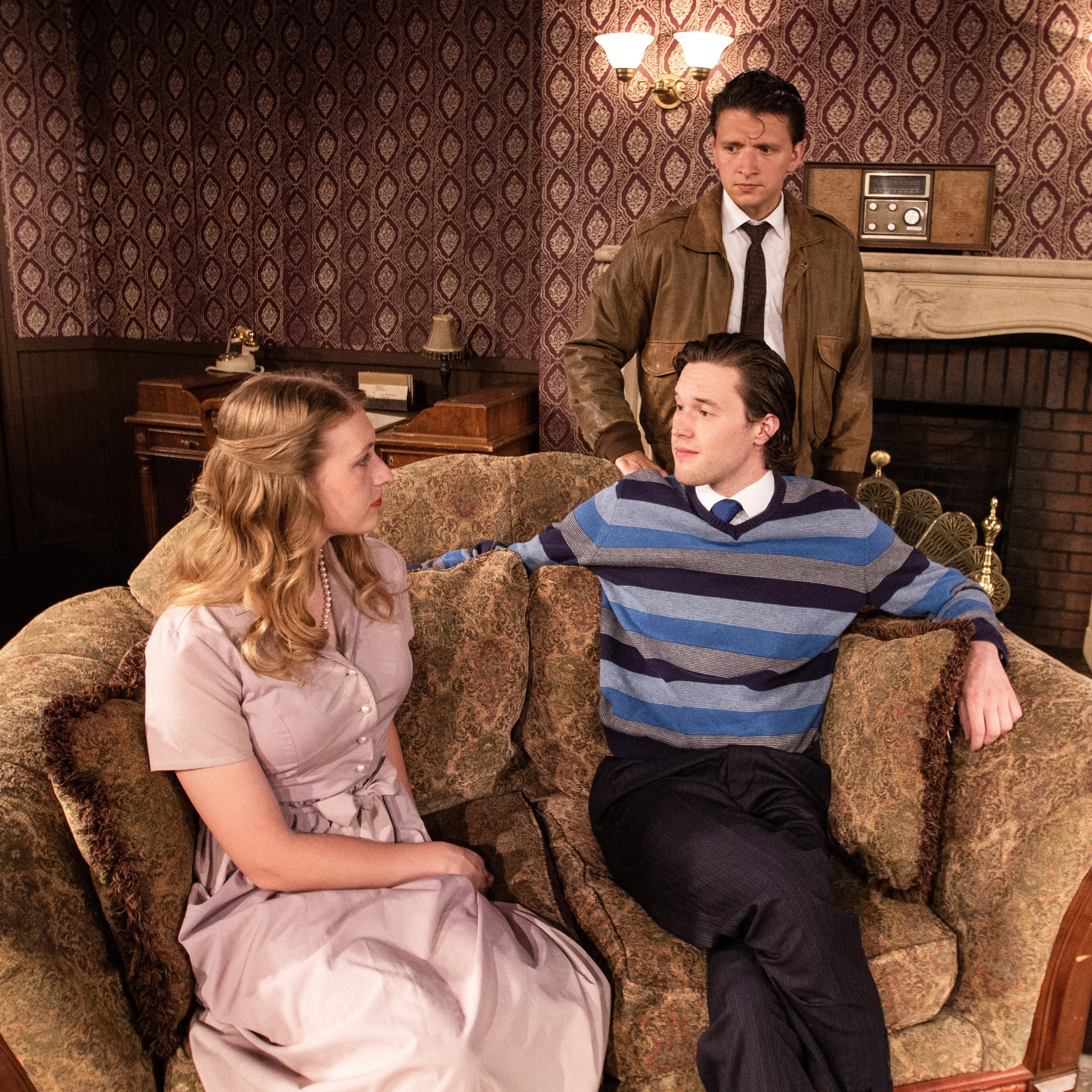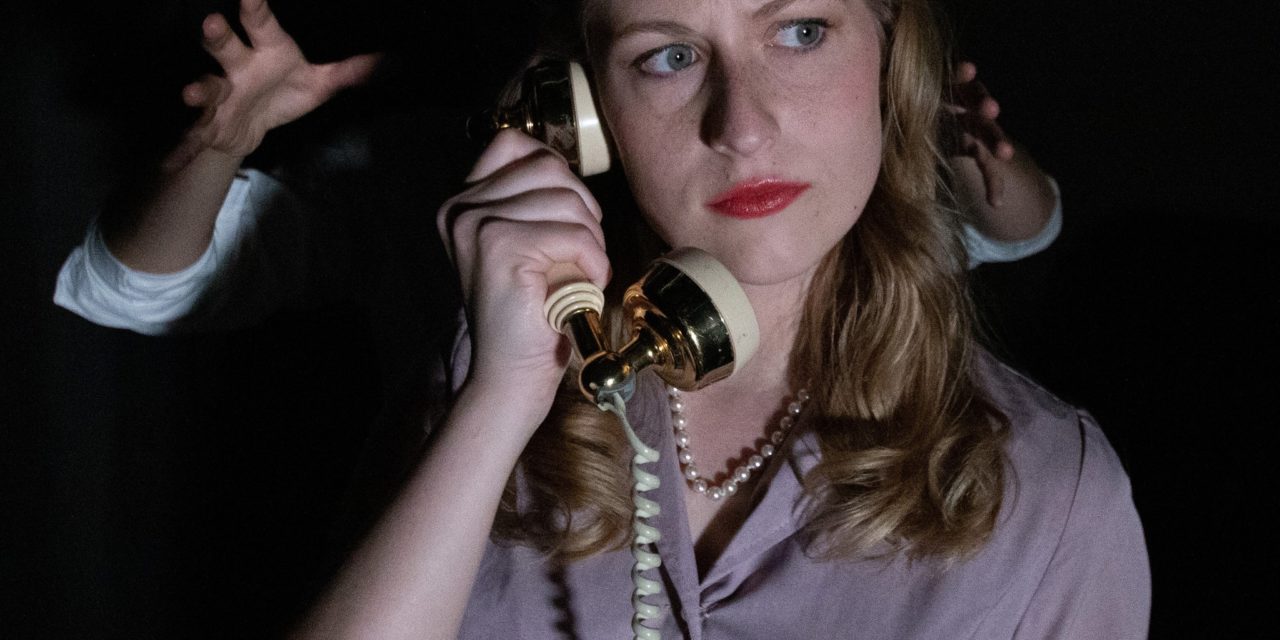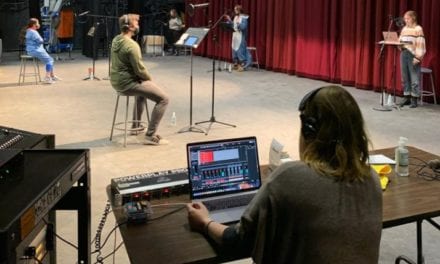PROVO — There are times when a play and audience member are just not a match. Such is the case with me and Dial M for Murder at the Covey Center in Provo. Despite its widespread praise, Tony Award, and successful film adaptation by Alfred Hitchcock, that is no guarantee that the play will work for everyone. While Dial M for Murder is a classic of mystery, I walked away thoroughly underwhelmed, even though there were some capable actors in the cast.

Show closes August 19, 2023.
Written by Frederick Knott, Dial M for Murder premiered as a play on BBC Television in 1952 and then at the West End and on Broadway. This mystery story has a very entertaining detective at the helm in Inspector Hubbard (played quite brilliantly at the Covey by Matthew Carlin), but the play’s biggest problem is the murder does not happen until Act II, and the inspector does not enter the play until after this event occurs. As a result, the story feels very plodding and dull. In comparison to other suspense plays, like, Wait Until Dark, The Mousetrap, or even The 39 Steps, Dial M for Murder did not build up the suspense or clues in a compelling manner — and then the inspector wraps things up very quickly in a way that fails to satisfy.
Some of the directing choices by Reese Purser were a little strange. Most of the action involving the murder and body happen behind a sectional, which made it difficult for the audience to see when a letter or key is changed or other important action occurs. Purser also had long sections staged in the dark (including the big murder), which I suppose creates a certain degree of mood and mystery; but, the scenes went on for too long. I grew anxious to see what was actually happening to the characters.
Considering the play is performed in a black box theatre, technical director Robert Seely and lighting director Spencer Powell did tremendous work creating the feel of a 1950s apartment with a believable terrace and just the right amount of “moonlight” and “breeze” coming through the windows. The believable costumes and makeup from designer Jessica Moody are also a treat that transports the audience back to the mid-20th century. I was also impressed with the sound effects used throughout the play. There are multiple times where the action stops, and the characters are just listening to a tap on the door or an unlocking of a door; these effects felt realistic and are very effective. There are also radio broadcasts and phone calls played that felt authentic and interesting.

One aspect of the play I found confusing is the development of Margot’s character. She starts off as having cheated on her husband with American Max Halliday and this gives supposed motivation for said husband Tony to want to murder her (and her fortune which he would inherit.) However, I never got the sense of Margot having the personality to do something so brazen and socially unacceptable, particularly for the 1950s. It was like she expected everyone to embrace Max without any sense of social or political scandal. I do not, however, blame actress Andy Morgan, as she did what she could with the role. Margot seems to want to continue on with both Tony and Max, which makes her appear extremely clueless.
Tony (played by Brenner Finch) is appropriately sociopathic and especially creepy as he goes from friendly chap to twisted conman with Captain Swann (played by Isaac Maltby), even if that scene dragged on way too long. I was impressed with all the British/Irish accents from the cast that stayed consistent throughout the whole show. Matthew DelaFuente is also terrific as the American boyfriend Max Halliday, although I wish we saw more of his character. (Because he is a crime writer, the script could have used him earlier to put clues together and help the inspector.) Finally, as I said, Carlin is charming and charismatic as the wily detective.
While Dial M for Murder is considered a classic murder mystery, the play was just not a compelling evening for me, and I fail to see what makes it special. I know I am not alone in my reaction, because several people in the audience fell asleep. The Covey Center’s production of Dial M for Murder has its strong points, but the real mystery is how the play has endured for so long.





